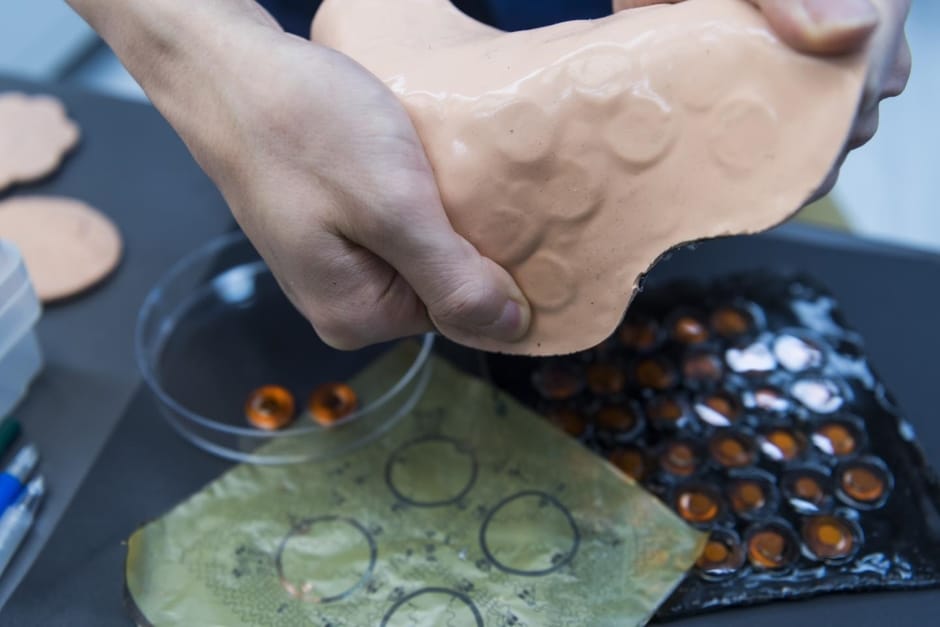This is the claim of the joint-research team from City University of Hong Kong (CityU) and Northwestern University, whose system, which is controlled and powered wirelessly, could be applied in communications, prosthetic control and rehabilitation, as well as gaming.
Despite being the largest organ of the body, skin is a relatively under-explored sensory interface for VR or augmented reality (AR) technology. According to CityU, current VR and AR devices usually rely on vibratory actuation imparted to the skin by electrical motors, but these systems are limited as they involve wires and battery packs attached to the body.
Artificial skin provides haptics for use in rehabilitation or VR
VR surgery simulation adds haptic glove capability
Dr Yu Xinge, Assistant Professor, Dr Xie Zhaoqian, Senior Research Fellow of Department of Biomedical Engineering at CityU and their team, along with colleagues at Northwestern University, plus collaborators from research institutes and companies in US and China, have developed an integrated skin VR system which can receive commands wirelessly, and then simulate the “touch” with vibration. The user can feel the touch by putting a thin, soft and adhesive device on the skin. The research findings have been published in Nature.
The skin-integrated VR device is comprised of actuators simulating touch by millimetre-scale mechanical vibration. These components are integrated into a 3mm thick silicone-coated elastomeric layer that is said to be breathable, reusable and functional at a full range of bending and twisting motions. Chip-scale integrated circuits and antennae embedded inside the skin VR device allow it to be powered and controlled wirelessly.
“The haptic actuators can harvest radio frequency power through the large flexible antenna within a certain distance, so the user wearing the device can move freely without the trouble of wires,” Dr Yu said in a statement.
In use, the haptic actuators require under 2mW to induce a notable sensory vibration, while the conventional DC-driven ones require around 100mW to produce the same level of vibration.
“Thus, we solved the difficult problem of transmission by low-power wireless function and significantly increased the distance of the operation for our system,” said Dr Yu. “This system not only saves power but also allows users to move more freely without the trouble of wires.”
The team is running an application trial for the users of prostheses to feel the external environment through the sense of touch and provide feedback to the users. “It can help them to feel the external stimulation with their prosthesis, such as the shape or texture of an object,” said Dr Yu. In addition, it can be used for developing virtual scenes for clinical applications.
He believes also that the system can greatly enhance sensory experience in social media interactions, multimedia entertainment, surgical training and beyond.
The team’s next step is to fabricate an electronic skin that senses temperature.
Source: VR system gives sense of touch to video calls | The Engineer The Engineer













